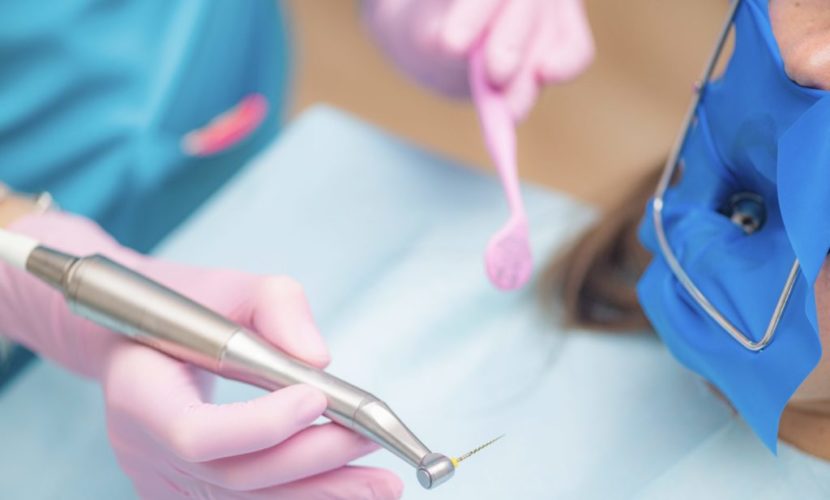Root Canal Treatment in Spring, TX
A toothache is not only extremely painful, but it can also be a sign that something more serious is going on with your teeth. If you’re experiencing a toothache and need root canal treatment in Spring, TX, our team at Prestige Dental of Texas can help. Our experienced dentists will be able to quickly diagnose the issue and provide the necessary treatment to help you get relief from your pain.
What exactly is a root canal?
A root canal is a dental procedure in which the nerve of a tooth is removed, typically because it has been infected or damaged. The nerve is housed in the “pulp” of the tooth, which is the soft tissue at the center of the tooth. Once the nerve has been removed, the pulp is cleaned and sealed off so that bacteria cannot enter.
What are the steps involved in root canal treatment?
The first step in a root canal is to remove the infected or injured pulp from the tooth. This can be done with a small drill bit and a mild suction to remove the debris. Once the pulp is removed, the root canal is cleaned and shaped so that a sealant can be placed inside. The sealant will help to keep bacteria from entering the canal again. Finally, a temporary filling is put into place and the tooth is checked for any additional problems. If all looks well, you will be scheduled for your final restoration appointment.

What is the average price for root canal treatment in Spring, TX?
On average, root canal treatment generally costs between $800 and $1,800 out of pocket. However, the costs can vary depending on the severity of the tooth infection and the type of procedure required.
Does Prestige Dental offer payment plans for root canal treatment?
Yes, Prestige Dental does offer payment plans for root canal treatment. Please call our office to learn more about our financing options. Thank you!
Does my insurance cover the cost of my root canal treatment?
Root canal therapy is generally covered by most dental insurance plans. However, there may be some limitations based on your particular plan. For example, some insurance plans may only cover a certain percentage of the treatment cost or may require that you pay a deductible before coverage kicks in.
Frequently Asked Questions aboout Root Canal Treatment:
Are there any additional costs for root canal therapy?
There can be additional costs associated with root canal therapy, depending on the type of treatment required. For instance, if a post and core is needed to support the tooth, this can add to the overall cost. However, root canal therapy is generally very efficient in terms of long-term dental health, so it is often worth the investment.
Will I need a dental crown?
A dental crown may be required after a root canal, depending on the severity of the tooth decay and the number of teeth treated. If teeth are extensively decayed or there is extensive damage to the tooth structure, a dental crown may be recommended as a way to protect and strengthen the tooth.
Do I need anesthesia before root canal treatment?
Before root canal treatment, the dentist will numb the area with a local anesthetic. This will ensure that you feel no pain during the procedure. The type of anesthesia used will depend on the extent of the procedure and your personal preferences. For example, some people may prefer to be sedated with IV sedation during the procedure. This will help you to relax and remain calm throughout the treatment. Others may prefer to use nitrous oxide, which helps to reduce anxiety and minimize discomfort. Regardless of the type of anesthesia used, you can rest assured that you will not feel any pain during the root canal procedure.
Will I need antibiotics after a root canal?
You may be prescribed antibiotics after a root canal, but it depends on the individual case. Antibiotics may help to prevent an infection from developing in the tooth’s root canal system after treatment. If an infection does develop, you may need to take antibiotics to clear it up.
What happens if my root canal fails?
If your root canal treatment fails, it means that the infection in your tooth has not been fully eradicated; this can happen for a number of reasons. One of the next steps you will likely need to take is to undergo a retreatment. This is a procedure whereby the dentist accesses the infected tooth once again and tries to clean out all of the bacteria.


